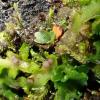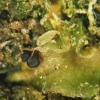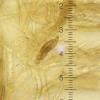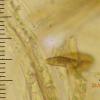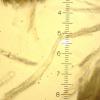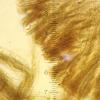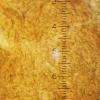
09-04-2023 09:38
 Joop van der Lee
Joop van der Lee
Requesting the following documentation in which Th

08-04-2023 18:44
 Riet van Oosten
Riet van Oosten
Hello, Found by Laurens van der Linde April 2023,

07-04-2023 00:14
Stefan JakobssonOn a dead branch of Salix caprea still on a standi

04-04-2023 10:28
Velvety olive-brown sporodochia on flowers of Yucc

24-03-2023 22:04
 Marc Detollenaere
Marc Detollenaere
Dear Forum,On dead leaves of Ammophila arenaria I

03-04-2023 12:39
Camille MertensHi all.Collected on Fallopia end of january.Spores

01-04-2023 04:22
 Wilhelm Guggisberg
Wilhelm Guggisberg
This is the first time I encounter a species of th

02-04-2023 09:50
 Robin Isaksson
Robin Isaksson
Hi! I dont know where to look to get a namne on th
Whitish inoperculate on the liverwort Aneura pinguis
Edvin Johannesen,
25-03-2023 14:42
 I have received this dried specimen for microscopy. In the fresh state the apothecia are (purplish-greyish) white, but they become black in the dry state (see photos of both states). On rehydration they appear somewhat gelatinous, dark purplish brown.
I have received this dried specimen for microscopy. In the fresh state the apothecia are (purplish-greyish) white, but they become black in the dry state (see photos of both states). On rehydration they appear somewhat gelatinous, dark purplish brown.Hymenium is a brown, dense palisade. Excipulum is paler brown, I would say textura epidermoidea (?). Asci and spores appear dead. Mature spores are brown, 20 x 6 micr., ellipsoid/allantoid, aseptate or I suspect becoming 1-septate (hard to see). Asci IKI negative.
All micro images in water.
I have not been able to find any bryophilous inoperculates with such brown spores.
Any suggestions?
Georges Greiff,
29-03-2023 13:03
Re : Whitish inoperculate on the liverwort Aneura pinguis
Very interesting collection. I have not seen any inoperculates on liverworts with brown spores. It may well be undescribed. Bryoscyphus is superficially similar and seeing living paraphyses would have helped. Bryoscyphus conocephali agg. is on liverworts in similar habitats. It is not that but it might be related.
George
George
Edvin Johannesen,
29-03-2023 14:55

Re : Whitish inoperculate on the liverwort Aneura pinguis
Thanks for your opinion, Georges. I will have another attempt at looking for paraphyses (I doubt they will be alive). I assume that the spore color is not a result of necrosis or some other process?
Georges Greiff,
29-03-2023 15:19
Re : Whitish inoperculate on the liverwort Aneura pinguis
Dear Edvin,
I have not noted brownish spores in any of the herbarium material of Bryoscyphus that I have examined, but that doesn't mean it won't happen. The darkening of the dry, old apothecia is a common occurrence Bryoscyphus, including in B. conocephali I collected recently. Perhaps this pigment has gone into the spores. I can check if this darkening happens in spores of my B. conocephali.
Unfortunately the paraphyses will be dead so you won't see the VBs. Perhaps now only sequencing can place this collection with more certainty within one of the bryophilous Leotiomycete groups. They are tricky even when fresh.
All the best,
George
I have not noted brownish spores in any of the herbarium material of Bryoscyphus that I have examined, but that doesn't mean it won't happen. The darkening of the dry, old apothecia is a common occurrence Bryoscyphus, including in B. conocephali I collected recently. Perhaps this pigment has gone into the spores. I can check if this darkening happens in spores of my B. conocephali.
Unfortunately the paraphyses will be dead so you won't see the VBs. Perhaps now only sequencing can place this collection with more certainty within one of the bryophilous Leotiomycete groups. They are tricky even when fresh.
All the best,
George
Edvin Johannesen,
29-03-2023 15:40

Re : Whitish inoperculate on the liverwort Aneura pinguis
It would be great if you could check this - thanks!

